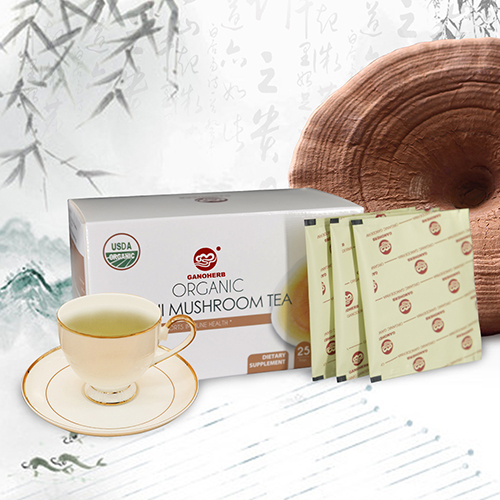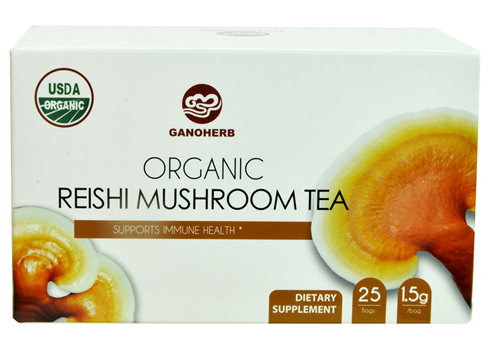First, the temperature 1. Temperature affects reproduction: Seasonal changes in temperature affect the animal's sexual activity. Excessive temperatures can reduce the reproductive performance of poultry. The high temperature will reduce the quality of the semen in the poultry, reduce the amount of ejaculate, and reduce the proportion of live spermatozoa to the total number of spermatozoa. The hypothermia prolongs the time when the rooster sperm is generated. Excessively high temperatures and low temperatures also affect the fertilization rate and hatchability of the eggs. 2. Temperature affects growth, fattening, and egg production: Excessively high temperatures can adversely affect poultry growth, egg production, and feed utilization. The optimum temperature for chick growth decreased with increasing age, 32°C at 1-7 days, 29°C at 8-14 days, 26-28°C at 15-21 days, 24-21°C at 22-28 days, Excessive temperatures lead to slow growth and increased mortality. Low temperatures lead to decreased feed utilization. Broilers have the highest production performance at 21°C, but excessive temperature changes increase broiler gain and feed utilization. No benefit was found; the optimum growth temperature for turkeys was 15.6-12.1°C. Commercial egg hens in the temperature of 10 ~ 36 °C environment, egg production than the average temperature of 23 °C higher, the suitable temperature for poultry egg production is 13 ~ 23 °C, it was claimed that the appropriate temperature for poultry production 25 ~ At 30°C, the effect of low temperature on egg production is inconsistent, and it is generally believed that continuous below 7°C will have an adverse effect on egg production and feed utilization. It is generally believed that temperature changes can maintain high egg production at 15-30°C. 3, temperature affect poultry health: cold and heat stress can weaken the body's resistance, so that some non-pathogenic microorganisms cause disease. Direct pathogenic factors: cold and heat stress can cause gastroenteritis in poultry, diarrhea, frostbite, bronchitis, pneumonia, nephritis, etc., so that the chicken's resistance to Salmonella decreased, chicks prone to indigestion, low temperature It is beneficial to the survival of bird flu and Newcastle disease virus and increase the chance of poultry infection with bird flu and Newcastle disease virus. Poultry during the winter of poultry feeding is overcrowded, and the airborne respiratory disease is easily prevalent. Skin diseases and ectoparasitic diseases are also prone to spread. In cold weather, poultry must increase feed intake to maintain thermal balance. If feed supply is insufficient, malnutrition can result. And resistance decreased. In the early stages of life, both cold stress and heat stress will reduce the chick's ability to obtain antibodies and reduce the level of colostrum immunoglobulin in the serum. Second, the air 1. Ammonia: Uric acid and undigested protein in poultry manure produce ammonia gas under the action of microorganisms, which can directly harm the respiratory tract of poultry. Under conditions of high ammonia concentration, it will cause the immune function of poultry to decline. Chickens are particularly sensitive to ammonia. Ammonia has a serious impact on chicken egg production performance. When the ammonia concentration in the poultry house is greater than 20 mg per liter, chickens or turkeys raised in this environment for 6 weeks can appear naked. Visible pathological changes, and chickens are more susceptible to Newcastle disease virus. Winter poultry farms often close doors and windows (especially at night) in order to keep warm and keep warm. Bad indoor ventilation causes large amounts of ammonia to remain, causing harm to poultry. Therefore, in some countries, the maximum concentration of ammonia in chicken houses is 20 milligrams per liter. 2. Carbon Monoxide: In the winter when the fire is heated in a closed poultry house, if the coal is not completely burned, especially at night, carbon monoxide poisoning may be caused, and carbon monoxide may be toxic to nerves and blood system. 3. Microorganisms: The pathogenic microorganisms in the air in poultry houses are the culprits in the spread of respiratory infectious diseases. Pathogenic microorganisms mainly transmit diseases through three methods: First, pathogenic microorganisms attach to dust particles to spread the disease; second, pathogenic microorganisms attach to the nose and throat of poultry, forming droplets by coughing and sneezing to contaminate the air in the poultry house. Cause the spread of the disease; third is the spread of pathogenic microorganisms that adhere to aerosols. 4. Particulates: Part of the particles in the poultry house, part of which is entered outside the house, and part of it is produced during the feeding and management process. The particles landed on the body of the bird and could be mixed with secretions of sebaceous glands, fine hair, dander, microbes, etc., and adhered to the skin, causing the skin to be itchy and even inflamed, making the skin dry and fragile and susceptible to damage and rupture. A large number of particles are sucked into the respiratory tract by poultry, causing bronchitis and pneumonia. If the humidity in the house is high, the particles can absorb the water vapor in the air and part of the ammonia to form mixed particles, such as deposition in the respiratory mucosa, the mucous membrane can be stimulated, cause mucosal damage, the smaller the particles, the greater the harm. Third, the humidity 1. High humidity: When the relative humidity is above 70%, it can promote the development of pathogenic fungi, bacteria and parasites, weaken the body's resistance, increase the incidence of various diseases, and increase the mortality rate. However, in a suitable or high temperature environment, high humidity can help the dust sink and make the air cleaner. This is beneficial to preventing and controlling respiratory infections, and the incidence of pneumonia is reduced. 2, low humidity: the air is too dry, especially in high temperature conditions, can make the skin and outer bare membranes dry, weaken the defense of the skin and outer bare mucosa for microorganisms. When the relative humidity is below 40%, respiratory diseases are easily caused. Low humidity causes poor growth of poultry feathers and is a precursor to the occurrence of poultry ticks. Low temperatures in winter cause a significant increase in the incidence of ascites in broilers. Fourth, light 1. Time: Scientific illumination can promote chicks' familiarity with the environment and prolong the intake time, often using a 23-hour light 1 hour dark lighting system; can control the sexual maturation of chickens, reduce the delayed sexual maturity of the light, so that the weight of the chicken when sexually mature Meet the standard, increase the egg production potential, and increase the light to shorten the mature time, so that timely maturity of the chicken; can control the weight of the cock, timely sexual maturity, 15 hours after 20 weeks of light, is conducive to sperm production, increase semen quality. Increased illumination and maintenance of a considerable length of illumination (15 hours or more) ensure that hens normally ovulate and lay eggs, allowing hens to gain adequate intake, drinking, and rest periods, and increase productivity. 2, intensity: adjust the light intensity control of chicken activities. The light is too strong to waste electrical energy, making the chicken appear nervous, easily frightened, and has a large amount of activity. It is prone to fight and paralysis. The light is too weak and affects the intake of food and drinking water. Poultry during the brooding period light intensity from strong to weak, with 60W incandescent lamp, spacing 2.0 meters, spacing 1.5 meters; 15W incandescent lamp during the breeding period, spacing 2.0 meters, spacing 3 meters, 2.2 meters away from the back of the chicken; laying time 60W Incandescent lamps, spacing 2.0 meters, spacing 1.5 meters, 2.2 meters away from the back of the chicken, after a constant light time of 16 hours, the light intensity is constant at 10 lux. In addition, we must pay attention to excessive light intensity between the time, the light evenly in the house, the light time and intensity into the egg production period can only increase, can not be reduced, so as not to affect the egg production rate. 3, light color: It is reported that Palestinian Hewlett University researchers found that green light can increase the chick's immune ability, reduce mortality, but will reduce egg production; In contrast, red light can increase egg production Keep the broiler quiet and promote growth and development. A farmer in Scotland changed the fluorescent lamp to a red light, which could extend the period of eggs for the real estate, so that chickens would not produce white eggs and produce yellow eggs. Fifth, health Establish a reasonable daily working procedure, sanitation should be cleaned daily, the removal of the feces as soon as possible as soon as possible, and disinfection. When disinfecting, stress should be minimized and the negative impact on poultry should be reduced. Fixed disinfection time, with poultry disinfection is best carried out in the dark, clean, start from the distance from the door, slowly spray to the other end, the nozzle up, away from the poultry 60-80 cm, the liquid was slow Slowly falling, action should be light. Before and after immunization with a vaccine, chemicals should not be used for disinfection, so as not to affect the immune effect. The disinfectant must have sufficient contact and action time with the microorganisms. The surrounding environment must maintain a certain temperature and humidity in order to kill the microorganisms. However, after sufficient disinfection is achieved, the ventilation of the poultry house must be strengthened. When preparing lime milk, prevent lime powder from entering the eyes. When disinfecting with sodium hydroxide, prevent skin burns. When using potassium permanganate and formaldehyde, use metal containers to prevent fire. In addition, we must promptly handle the cleaning and disinfection of food troughs, sinks, etc., so as to avoid poultry infection or poisoning.
Ganoderma
tea (Reishi Mushroom Tea/ Lingzhi Tea) is made of 100% USDA certified organic
Ganoderma Lucidum. The Ganoderma Lucidum ingredient used for this product comes
from our self-built organic Ganoderma farm located in Mt. Wuyi, Fujian, one of
the largest Ganoderma origins in China. The
whole cultivation process strictly follows the organic standards without any use
of pesticide, herbicide, and chemical fertilizer to ensure its highest quality
and efficacy.
This
organic Ganoderma Tea is very convenient to carry and make. Each box has 25
individually packaged tea bags. Just open
the sachet, put the tea bag in a cup and add hot water, a cup of warm and delicious
Ganoderma tea will be ready for you in just 1-2 minutes.
This
product has a unique mushroom flavor and a mellow sweet aftertaste. Different from other Herbal Tea on the market,
Ganoderma tea has many health benefits, such as enhancing overall immunity,
relieving stress, improving sleep quality and reducing allergy. It is gluten free, lactose free, and no additives or
preservatives whatsoever, therefore it Is suitable for all people especially
for people with low immunity or high stress.
Ganoderma Tea Ganoderma Tea,Reishi Tea,Reishi Mushroom Tea,Herbal Tea,Ganoderma Lucidum Tea,Lingzhi Tea Ganoherb International Inc. , http://www.ganoherb.us


It is the key to control high-yield environment for raising chickens in winter
The outside temperature in winter is very low. The contradiction between the insulation and ventilation of poultry houses makes it difficult to control the environment of the poultry house. When the concentration of environmental pollution in the poultry house is low, the poultry body will not react abnormally in a short period of time and it is easily overlooked by management personnel. However, in the long-term environment with low concentration of pollution, poultry will gradually be harmed. When a variety of unfavorable factors exist at the same time, it may lead to poultry infection with bacteria and viruses. For this reason, controlling the housing environment becomes the key to high-yielding poultry breeding in winter. The author hereby suggests that farmers should start from the five aspects of temperature, air, humidity, lighting, and hygiene, and in accordance with the requirements of scientific management, ultimately achieve a steady increase in aquaculture efficiency.